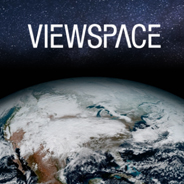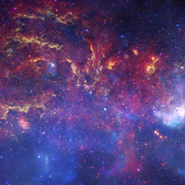What in the Universe: Supermassive Black Hole
Video Player
Video Versions
What is influencing the movement of stars at the center of the galaxy?
Produced by the Space Telescope Science Institute’s Office of Public Outreach in collaboration with NASA’s Universe of Learning partners: Caltech/IPAC, NASA Jet Propulsion Laboratory, Smithsonian Astrophysical Observatory, and Sonoma State University.
- Video of orbiting stars: European Southern Observatory/S. Gillessen
- Galaxy illustration: NASA/JPL-Caltech
- Black hole illustration: NASA/ESA, D. Coe, G. Bacon
- Star orbit illustration: European Southern Observatory /L. Calçada
Written by Leah Ramsay
Designed by Leah Hustak and Dani Player
Editorial and design input from Dr. Quyen Hart, Yesenia Pérez, and Margaret W. Carruthers
Designed by Leah Hustak and Dani Player
Editorial and design input from Dr. Quyen Hart, Yesenia Pérez, and Margaret W. Carruthers
Music courtesy of Music for Non-Profits
(SPEECH)
[ETHEREAL MUSIC]
(DESCRIPTION)
A series of space-related graphics. Text, What In The Universe?
A series of space-related graphics. Text, What In The Universe?
What is influencing the movement of these stars? A. Planets. B. Each other. C. Stellar winds. D. A supermassive black hole.
A highlight over answer D, A supermassive black hole.
European Southern Observatory (Near-Infrared Light). Sagittarius A*, Center of the Milky Way Galaxy, Illustration. Most large galaxies have a supermassive black hole at their center.
The supermassive black hole at the center of our Milky Way galaxy is known as Sagittarius A*.
Black holes are called "black" because they do not emit or reflect light.
Astronomers can infer the presence of a black hole by its gravitational effect on things around it -- like stars.
The video at left is the result of a 16-year study mapping the orbits of 28 stars at the heart of our galaxy.
The graphic above shows the wobbling orbit of one of those stars, demonstrating the effect of an extreme gravitational influence.
The paths of the stars were used to calculate the mass around which they are orbiting -- something four million times more massive than the Sun in a space no larger than our solar system.
A black hole is the simplest explanation for something so massive, in such a small space, that cannot be detected with a telescope.
The ongoing study of our galaxy's center provides observational evidence for theories of gravity and supermassive black holes.



